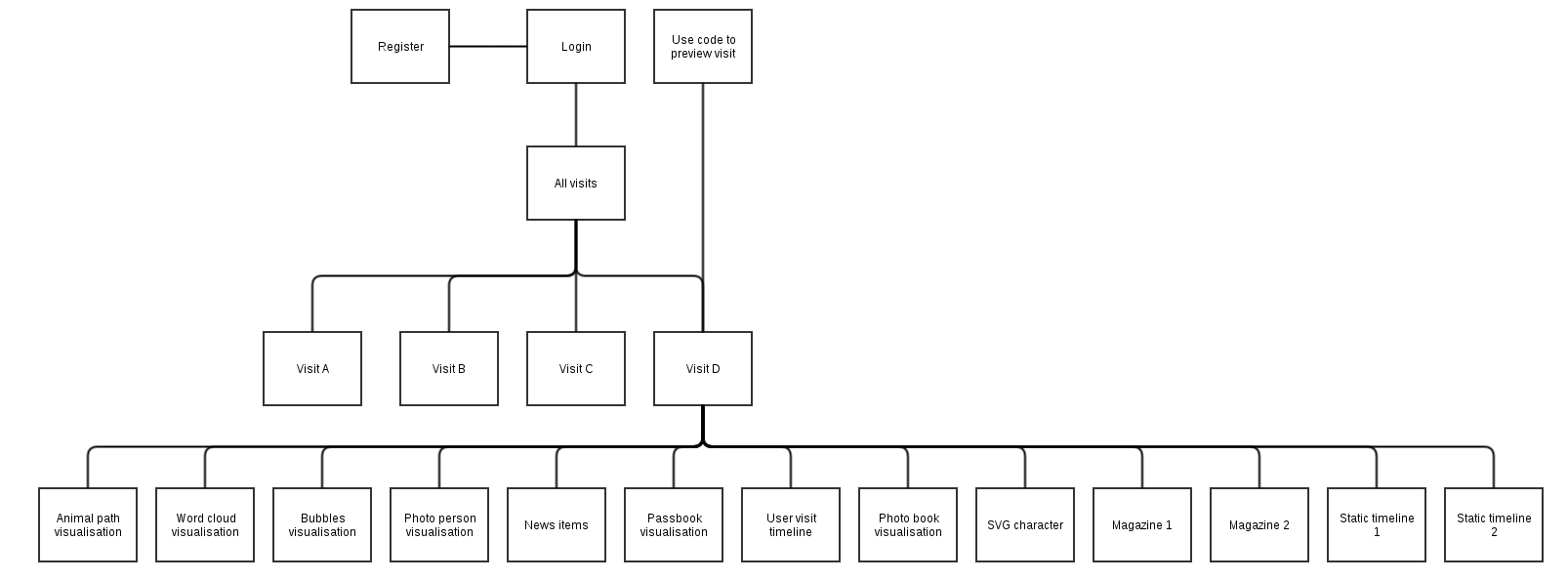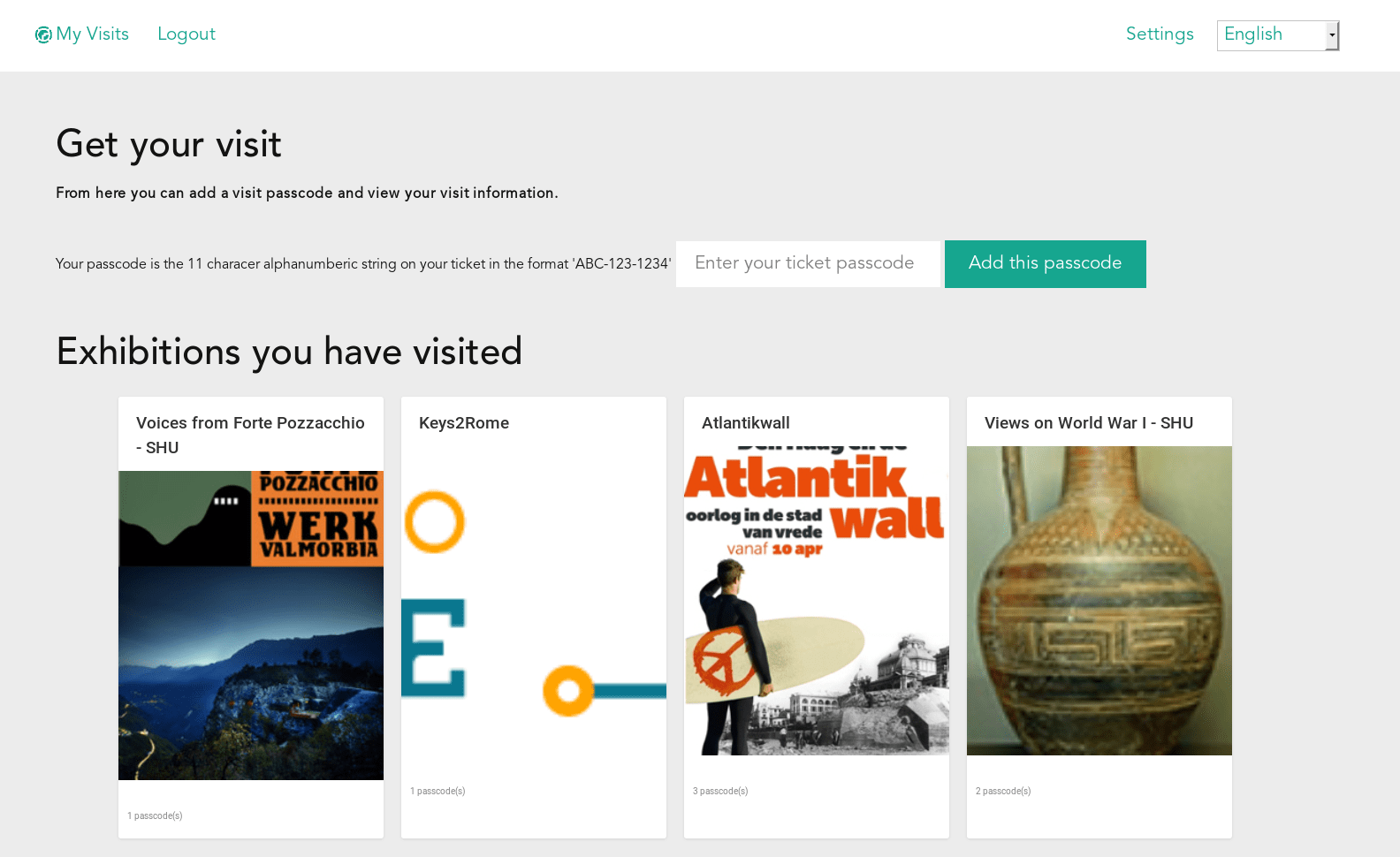Introduction
The idea of allowing users to extend their visit is very popular with Museum officials at present. The meSch post-visit visualization tool was designed to explore how elements from an exhibition could be combined with information from a users visit to provide a personalized hyper-visual interface. The hope being it would allow the visitor:
- to further explore the exhibition
- be inspired to learn more about missed points of interest
- provide them with additional related objects of interest that were not part of the exhibition for their consideration.
- Enrich the user’s experience
Site Map
How it works for the user
When the user has completed their physical visit they go to a checkout station with their digitally enhanced smart object (or replicas), place it on the pulsating disc, wait a few seconds and receive their personalized postcard.

Smart replicas from Museon Atlantikwall exhibition
This postcard contains a number in the top right-hand corner, representing their unique identifier. The visitor can then visit the site and decide to
- Get a preview using only the passcode without logging in
- Register
- Login
A registered user can collect multiple visits to multiple exhibitions. This means that when a registered user logs in they are taken to a page listing all of the exhibitions they have visited.
Clicking on any exhibition box will take the user to a page containing a summary of the exhibition, latest news and a preview list of available visualizations. If the user has saved multiple visits against an exhibition they will see multiple versions of some visualizations, one for each visit.
 Clicking on most boxes will take the user to a visualization. There are currently up to 12 types of visualization supported by the system. The available visualizations vary greatly in their complexity and degree of abstraction. We are currently in the process of assessing which visualizations bring value to the tool and which should be removed in order to make the tool as useful and appealing as possible from a cultural heritage perspective.
Clicking on most boxes will take the user to a visualization. There are currently up to 12 types of visualization supported by the system. The available visualizations vary greatly in their complexity and degree of abstraction. We are currently in the process of assessing which visualizations bring value to the tool and which should be removed in order to make the tool as useful and appealing as possible from a cultural heritage perspective.
Over the next couple of weeks, I hope to write a series of posts, one for each visualization referencing their purpose and the technical tools used. Links to these posts will be added below.


